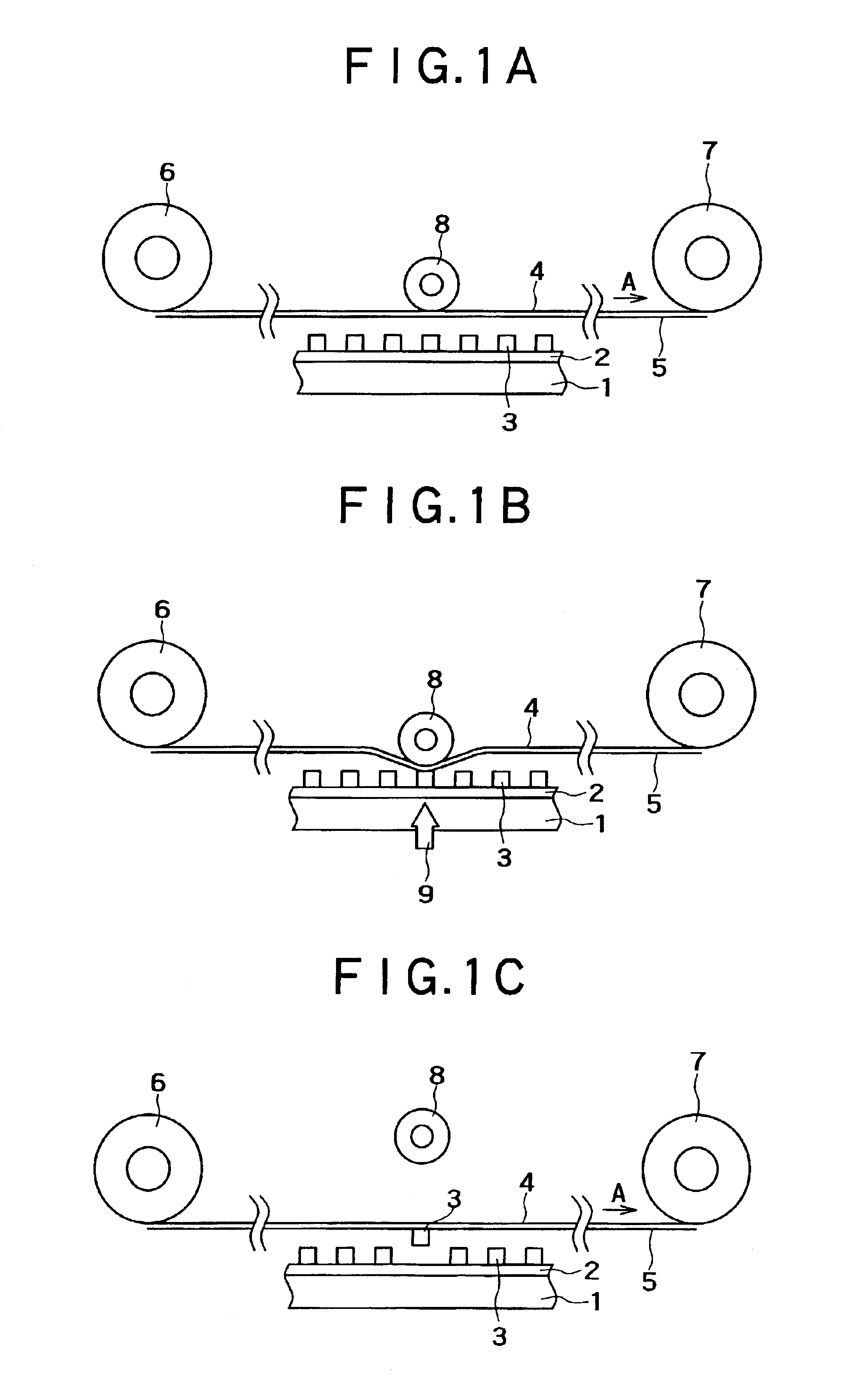Device transferring method, device arraying method, and image display fabrication method using the same
a technology of device array and transfer method, which is applied in the directions of identification means, instruments, transportation and packaging, etc., can solve the problems of not being able to adapt to arraying a large number of devices, requiring a long time, and long time for the devices, so as to facilitate the transfer facilitate the re-array of a number of devices, and the effect of enlarged spa
- Summary
- Abstract
- Description
- Claims
- Application Information
AI Technical Summary
Benefits of technology
Problems solved by technology
Method used
Image
Examples
Embodiment Construction
[0033]A device transferring method according the present invention, will be first described by way of an embodiment shown in FIGS. 1A to FIG. 1C. In this embodiment, the device transferring method of the present invention is applied to transfer devices formed on a base substrate to a flexible substrate.
[0034]First, as shown in FIG. 1A, an adhesive layer 2 is formed on a base substrate 1 as a supply source, and a number of devices 3 are formed in an array on the base substrate 1.
[0035]The base substrate 1 is not particularly limited but may be made from any suitable material in consideration of a combination with the devices 3, and the like.
[0036]The adhesive layer 2 may be configured as an adhesive layer allowing the devices 3 to be adhesively fixed thereto at the time of forming the devices 3 in an array on the base substrate 1 and to be later peeled therefrom at the time of picking up the devices 3 from the base substrate 1. By forming the adhesive layer 2 on the base substrate 1 ...
PUM
 Login to View More
Login to View More Abstract
Description
Claims
Application Information
 Login to View More
Login to View More - R&D
- Intellectual Property
- Life Sciences
- Materials
- Tech Scout
- Unparalleled Data Quality
- Higher Quality Content
- 60% Fewer Hallucinations
Browse by: Latest US Patents, China's latest patents, Technical Efficacy Thesaurus, Application Domain, Technology Topic, Popular Technical Reports.
© 2025 PatSnap. All rights reserved.Legal|Privacy policy|Modern Slavery Act Transparency Statement|Sitemap|About US| Contact US: help@patsnap.com



